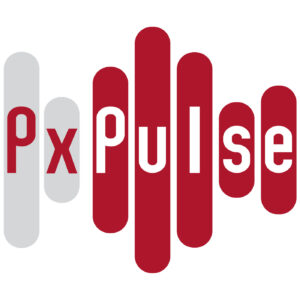There are more biomedical strategies available for HIV prevention than ever before. At the same time, research is continuing. Trials must be able to test new tools and meet ethical standards by providing participants with the best available prevention package.
Evolving Designs for HIV Prevention Trials
Special Interview with AVAC’s Micheal Ighodaro
This episode of Px Pulse, Special Interview with AVAC’s Micheal Ighodaro, goes behind the scenes of the new HBO movie, The Legend of the Underground. The film documents the lives of AVACer Micheal Ighodaro and other LGBTQ Nigerians as they confront enormous risks to ‘live out loud’. As the movie unfolds, individual stories of resilience are woven together into a tapestry that portrays a revolution for cultural change in Nigeria.
No Data No More: Manifesto to Align HIV Prevention Research with Trans and Gender Diverse Realities
No Data No More: Manifesto to Align HIV Prevention Research with Trans and Gender Diverse Realities, written and informed by trans and gender-diverse (TGD) activists from Cape Town to Berlin, with support and solidarity from AVAC, offers practical and essential priorities for demonstrable and viable HIV interventions for TGD people.
This manifesto reflects the urgent need for peer-led HIV prevention research with true ownership and acceptability in TGD communities.
Also available: download the Manifesto summary for a snapshot of key recommendations
Understanding Results of the AMP Trials
The AMP trials evaluated the ability of a broadly neutralizing antibody (bNAb), called VRC01, to protect against HIV. The trials showed that VRC01 did not reduce the overall risk of acquiring HIV. However, VRC01 protected some individuals from infection by HIV viruses that were particularly vulnerable or “sensitive” to the antibody. Together these results mean AMP will inform future bNAb and vaccine studies. Read Understanding Results to learn more.
To End A Plague
This episode of Px Pulse takes a deep dive into PEPFAR, The President’s Emergency Plan for AIDS Relief, looking at its pioneering successes and its challenges. In this episode, AVAC’s former Director of Strategy and Content, Emily Bass, discusses her new book, To End a Plague: America’s fight to end AIDS in Africa.
HIV Vaccines: The basics
This introductory PowerPoint slide set reviews basic concepts, and provides an overview of research status and recent developments.
HIV Vaccine Research: Building on the Lessons from COVID
Building on the lessons of COVID, HIV vaccine advocates can mobilize for an HIV vaccine research and access agenda. This two-page document gives suggested messaging.
Breaking the Bottlenecks to COVID-19 Vaccine Access
This graphic identifies the factors contributing to the bottlenecks in the global supply of COVID-19 vaccines.
How can research ethics committees help to strengthen stakeholder engagement in health research in South Africa? An evaluation of REC documents
The authors recommend research ethics committees (RECs) amend their application forms to better ‘trigger’ researchers to thoughtfully plan sound stakeholder engagement. In the longer term, RECs’ documents should be better harmonised internally regarding their stance on stakeholder engagement.
Dive into the AMP Trials

Results from the AMP Trials, studying a broadly neutralizing antibody (bNAb) known as VRC01, were complex, with still unfolding implications for the field.
The AMP Trials, two Phase IIb studies, tested the safety and efficacy of an infusion of VRC01 received every eight weeks. HVTN 703/HPTN 081 enrolled 1,900 women in sub-Saharan Africa, and HVTN 704/HPTN 085 enrolled 2,700 men who have sex with men and transgender people in North and South America and in Europe.
The overall efficacy demonstrated in the trials was not protective. But when VRC01 was fighting strains of HIV that were highly sensitive to it, the antibody did provide partial protection. So what does that mean for the field, and what other questions have been raised by these pioneering trials?
In this episode of Px Pulse, AVACers Jeanne Baron and Daisy Ouya talk to leading bNAb researcher, IAVI’s Devin Sok; a veteran HIV research advocate Mark Hubbard who served on AMP’s protocol team; and a senior member of the HVTN’s community engagement team, a chief explainer of the AMP trails, Gail Broder. Together we explore why these findings point to the need for combination antibodies, the need for a better understanding of the types of HIV that are circulating in a community, the complicated implications of a key lab test, the TZM-bl assay and more.
Hosted and produced by Jeanne Baron.
Highlights
- The HVTN’s Gail Broder explains the results of the AMP Trials (11:09)
- Researcher Devin Sok from IAVI and advocate Mark Hubbard on AMPs’ implications (12:57)
Resources
- Understanding Results of the AMP Trials — AVAC
- Results from AMP Trials — New England Journal of Medicine
- Dedicated webpage on antibody-mediated prevention studies, AVAC
- Efficacy Results Announced: Global first AMP trials, HPTN
- The AMP Trials — A Glass Half Full, New England Journal of Medicine
- The Future of Antibody-based HIV Prevention, IAVI Report
- AMP-ticipation: Context and concepts for understanding the AMP Trials, AVAC